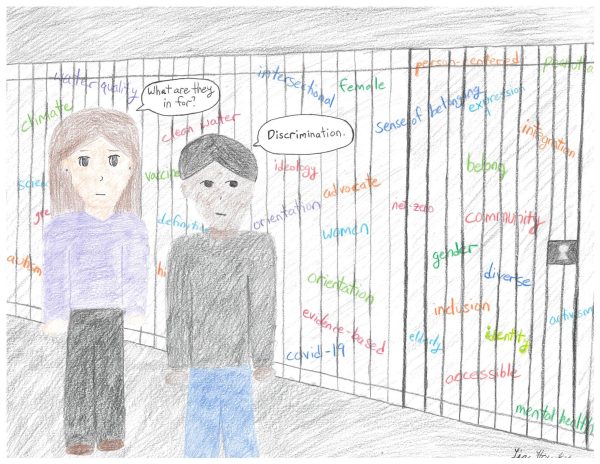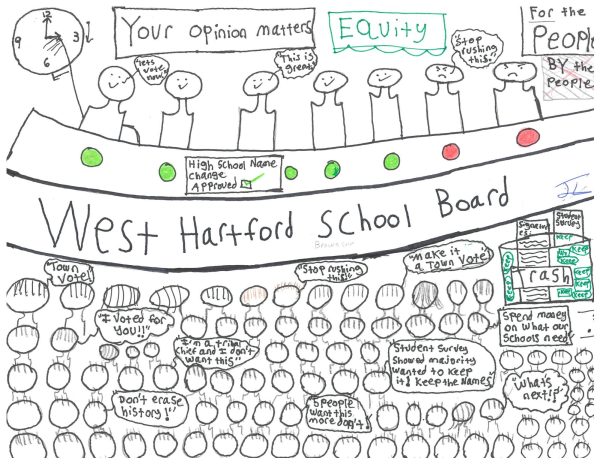The Cost of Belonging
If you’re a student at Hall High School, or any teenager in modern society, then chances are you’ve experienced FOMO, or the fear of missing out. Whether it be cheering on our Warriors at a football game, busting a move with friends on the Homecoming dance floor, or even sporting some Hall High merchandise, students at our school know how compelling the desire to participate is.
I don’t mean to say these activities are bad or a waste of time; in fact, I think school spirit lays the foundation for a lot of intra- and extracurricular success. Most kids will happily pay what’s required to attend events and fit in with their peers or sports teams. For others, however, the cost of belonging may be a burden too great to carry.
Shelling out $3 to attend a sporting event may seem like a drop in the bucket to some, but for a teenager unable to work or forced to cover other expenses, those games add up. Truthfully, many of us take for granted our ability to play high school sports at all.
The cost to play field hockey per year is $175; it’s roughly the same for football, girls’ soccer, and girls’ swimming and diving, just to name a few. Even factoring in coaches’ salaries and bus fees, this seems like an exorbitant amount for a single season, especially when, at least for field hockey, players provide all or most of their own equipment.
I spoke to a volleyball player at Glastonbury High School, who paid only $10 for the season. Why is it then, that at Hall – with the added costs of sports gear (an “extra” expense that students often feel pressured to pay) and team bonding gifts – playing a sport and reaping the benefits of that social (and possibly collegiate) connection becomes a selective privilege?
It’s a trend that starts in the town leagues and follows WeHa sports players throughout their years of high school. If you didn’t play in elementary and middle school, you’re at a disadvantage to the experienced teammates around you. Even if your parents scraped by for a year or two to cover the costs, the promise of an inflated price for the next four years is surely a deterrent.
Every year costs seem to grow even more substantial. Every year those who can afford to “pay to play” shell out the fees while others slip under the radar of socioeconomic ignorance. And it isn’t just on a field that we see the role of money on our social perception. Those of us who could afford a blue SENIORS shirt wore it in solidarity with our peers on the first day of school.
There is the pressure to drive to school, and the pressure to wear the latest trendy clothes. There is the cost of AP exams and other “optional” tests, including the SAT and ACT, whose results can determine whether or not a student takes a final exam, or attends a certain institution.
It becomes a matter of guilt when a student must ask their parents for money to go on a field trip or attend a dance. The cost of academia takes a heavy toll on the guardian already, especially if they are paying for college or some other post-graduate education.
Social events like prom and senior outings become “selfish,” yet many of us don’t hesitate to Venmo-request our parents for these fees, thereby ensuring we don’t miss out on the traditional “high school experience.”
So is the student of a family making just above the free or reduced lunch income level willing to ask for this sacrifice so they can dress up for a party? If they do pay, will they even have any money left over for an outfit or transportation? Does the $80 ticket mean no yearbook?
The cost of belonging is one of both social and academic pertinence. Such unrealistic financial expectations infiltrate our classrooms, friend groups, and family life. In the end, the message we receive — if you want to “fit in,” you must pay the price — is one that affects us all.





